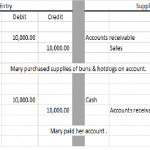Financial institutions often offer compound interest on deposits, compounding on a regular basis – usually monthly or annually. This flexibility allows you to calculate and compare the expected interest earnings on various investment scenarios so that you know if an 8% return, compounded performance daily is better than a 9% return, compounded annually. For young people, compound interest offers a chance to take advantage of the time value of money. Remember when choosing your investments that the number of compounding periods is just as important as the interest rate. The investing information provided on this page is for educational purposes only. NerdWallet, Inc. does not offer advisory or brokerage services, nor does it recommend or advise investors to buy or sell particular stocks, securities or other investments.
Invest smart. Build wealth. Retire early. Live free.
This course will show you how to calculate your retirement number accurately the very first time – with confidence – using little-known tricks and tips that make the process easy. You can also use several free compound interest calculators online. As a final note, many of the features in my compound interest calculator have come as a result of user feedback. So, if you have any comments or suggestions, I would love to hear from you. Let’s cover some frequently asked questions about our compound interest calculator.
- When you invest in the stock market, you don’t earn a set interest rate, but rather a return based on the change in the value of your investment.
- You earn an average of 4% annually, compounded monthly across 40 years.
- Because these payments are paid out in check form, the interest does not compound.
- To illustrate the effect of compounding, let’s take a look at an example chart of an initial $1,000 investment.
By age 65, your twin has only earned $132,147, with a principal investment of $95,000. The effective annual rate (also known as the annual percentage yield) is the rate of interest that you actually receive on your savings or investment aftercompounding has been factored in. Compound interest can significantly boost investment returns over the long term. Over 10 years, a $100,000 deposit receiving 5% simple annual interest would earn $50,000 in total interest. But if the same deposit had a monthly compound interest rate of 5%, interest would add up to about $64,700. While compound interest is interest-on-interest, cumulative interest is the addition of all interest payments.
How is compound interest calculated?
Order your copy of Investopedia’s What To professional nonprofit letterhead Do With $10,000 magazine for more wealth-building advice.
Compounding periods are the time intervals between when interest is added to the account. Interest can be compounded annually, semi-annually, quarterly, monthly, daily, continuously, or on any other basis. Compounding can help fulfill long-term savings and investment goals, especially if you have time to let it work its magic over years or decades.
What is the effective annual interest rate?
If you left your money in that account for another year, you’ll earn $538.96 in interest in year two, for a total of $1,051.63 in interest over two years. You earn more in the second year because interest is calculated on the initial deposit plus the interest you earned in the first year. ______ Addition ($) – How much money you’re planning on depositing daily, weekly, bi-weekly, half-monthly, monthly, bi-monthly, quarterly, semi-annually, or annually over the number of years to grow. Instead, this type of bond is purchased at a discount to its original value and grows over time. Zero-coupon-bond issuers use the power of compounding to increase the value of the bond so it reaches its full price at maturity.
When the value of your investment goes up, you earn a return. Compound interest is the interest you earn on your original money and on the interest that keeps accumulating. Compound interest allows your savings to grow faster over time. We believe everyone should be able to make financial decisions with confidence. Looking back at our example what are assets and liabilities a simple primer for small businesses from above, if we were to contribute an additional $100 per month into our investment,our balance after 20 years would hit the heights of $67,121, with interest of $33,121 on total deposits of $34,000. $10,000 invested at a fixed 5% yearly interest rate, compounded yearly, will grow to $26,532.98 after 20 years.
It is for this reason that financial experts commonly suggest the risk management strategy of diversification. Number of Years to Grow – The number of years the investment will be held. The second way to calculate compound interest is to use a fixed formula. The first way to calculate compound interest is to multiply each year’s new balance by the interest rate.
Get 5 FREE Video Lessons With Uncommon Insights To Accelerate Your Financial Growth
This book teaches you how retirement planning really works before it’s too late. After 10 years, you will have earned $6,486.65 in interest for a total balance of $16,486.65. Within our compound interest calculator results section, you will see either a Rate of Return (RoR) or Time-Weighted Return (TWR) figure for your calculation. You may be wondering what these are, so let’s quickly discuss.






Laisser un commentaire